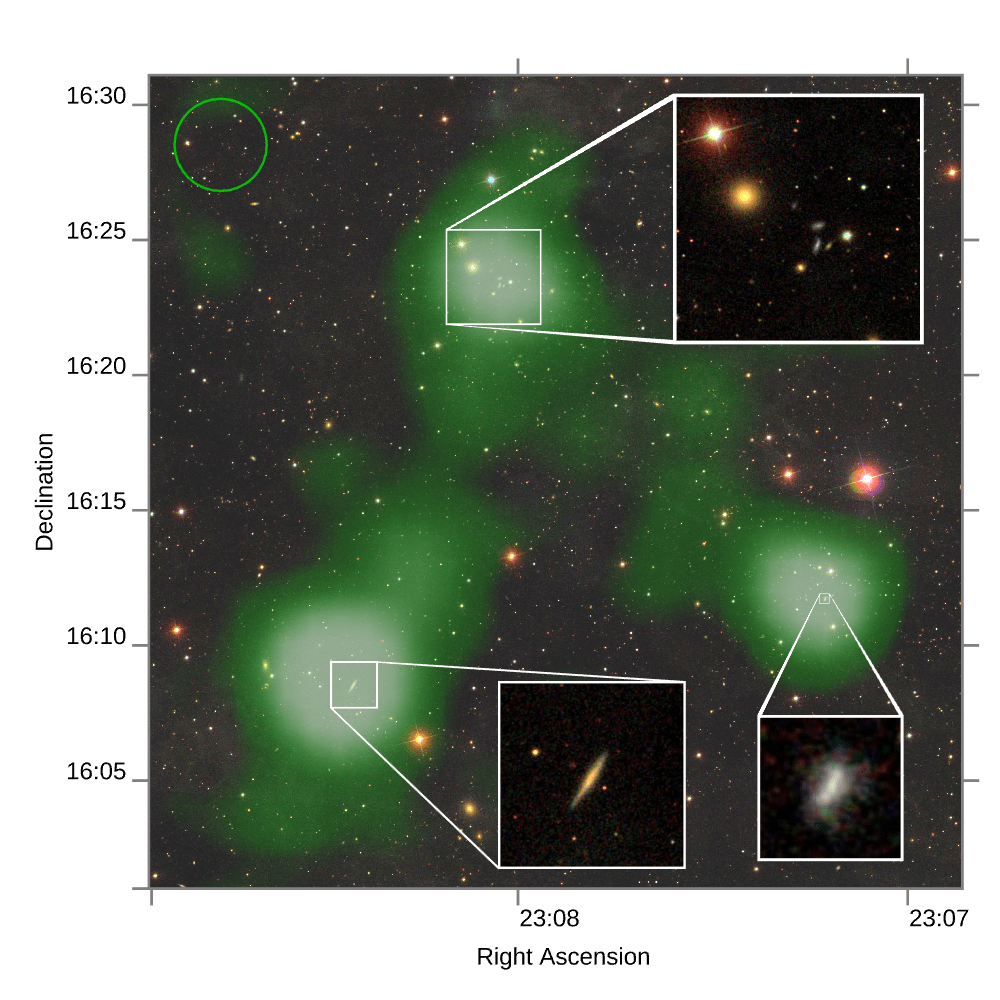How the heck did all that gas get there? Researchers have discovered an astonishing amount of it bridging galaxies, stretching across a stream that is 2.6 million light-years across. This is more than a million light-years longer than a similar stream that was previously found in the Virgo Cluster.
“This was totally unexpected,” stated Rhys Taylor, a researcher at the Czech Academy of Sciences who led the research. “We frequently see gas streams in galaxy clusters, where there are lots of galaxies close together, but to find something this long and not in a cluster is unprecedented.”
The atomic hydrogen gas is about 500 million light-years away and was spotted with the William E. Gordon Telescope at the Arecibo Observatory in Puerto Rico.
Its origins are unknown, but one hypothesis postulateas that a larger galaxy passed close to smaller galaxies in the distant past, drawing out the gas as the larger galaxy moved apart again. Alternately, the large galaxy could have pushed through the group and disturbed the gas within it.
The research will be published shortly in the Monthly Notices of the Royal Astronomical Society.
Source: Royal Astronomical Society

